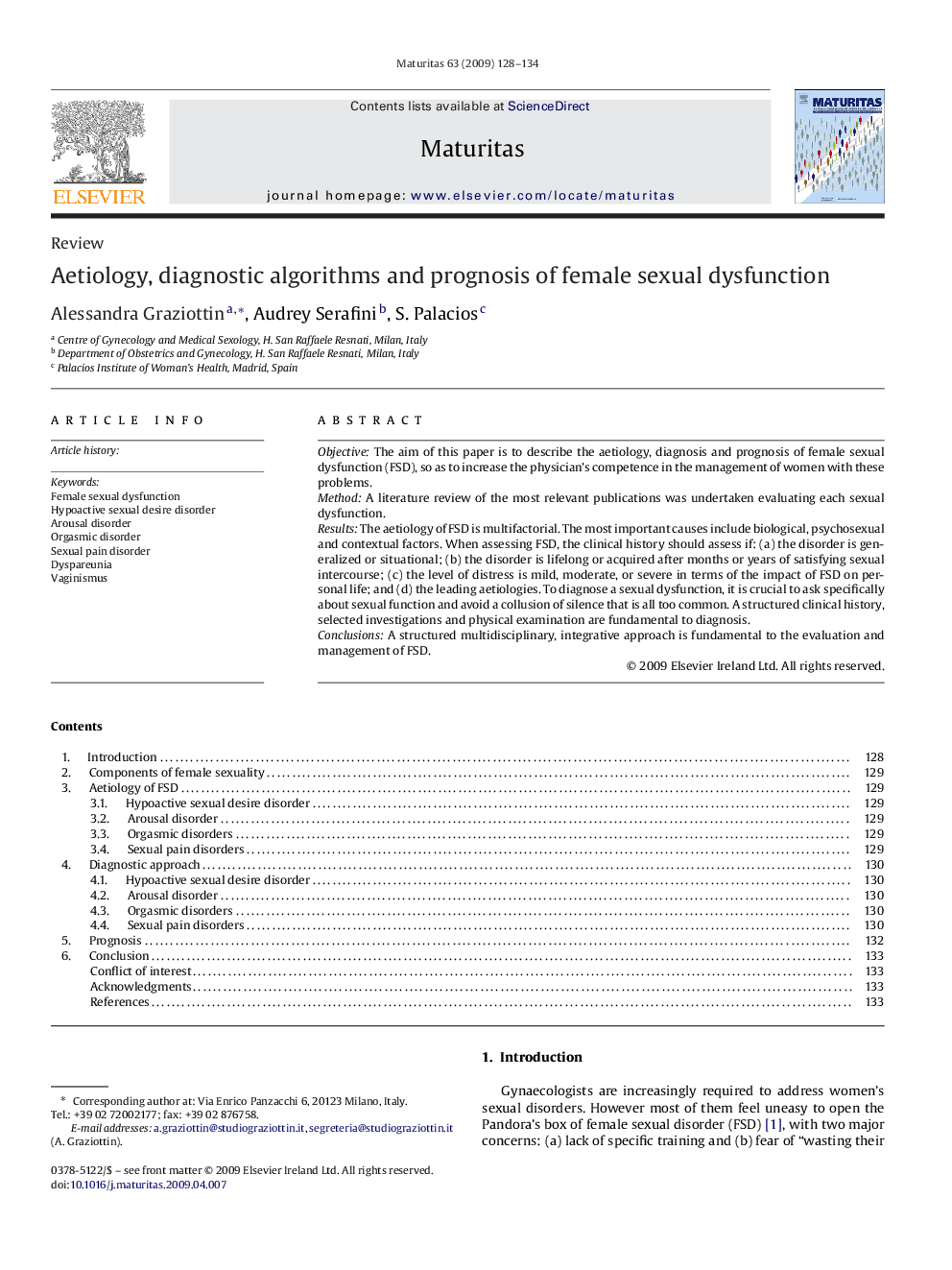| Article ID | Journal | Published Year | Pages | File Type |
|---|---|---|---|---|
| 1918101 | Maturitas | 2009 | 7 Pages |
ObjectiveThe aim of this paper is to describe the aetiology, diagnosis and prognosis of female sexual dysfunction (FSD), so as to increase the physician's competence in the management of women with these problems.MethodA literature review of the most relevant publications was undertaken evaluating each sexual dysfunction.ResultsThe aetiology of FSD is multifactorial. The most important causes include biological, psychosexual and contextual factors. When assessing FSD, the clinical history should assess if: (a) the disorder is generalized or situational; (b) the disorder is lifelong or acquired after months or years of satisfying sexual intercourse; (c) the level of distress is mild, moderate, or severe in terms of the impact of FSD on personal life; and (d) the leading aetiologies. To diagnose a sexual dysfunction, it is crucial to ask specifically about sexual function and avoid a collusion of silence that is all too common. A structured clinical history, selected investigations and physical examination are fundamental to diagnosis.ConclusionsA structured multidisciplinary, integrative approach is fundamental to the evaluation and management of FSD.
